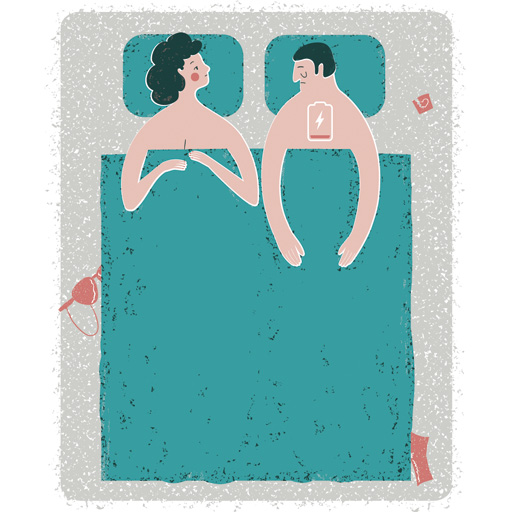Men's health: An uphill struggle
In Clinical
Follow this topic
Bookmark
Record learning outcomes
At a time when we're supposedly more health aware than ever before, what could be causing men to neglect their health?

Facts about men's health
Men are more likely than women to develop and die from cancer. The age-standardised incidence rate for all cancers in the UK in 2015 was 22 per cent higher in men and the mortality rate 44 per cent higher
€¢ Symptom awareness tends to be lower in men, with men less likely than women to recognise all but one of a range of common cancer symptoms. The largest gender difference occurs in identifying a 'change in the appearance of a mole', with the odds of recognising this symptom 60 per cent higher in women than men
€¢ Suicide rates are much higher in men. Around three-quarters of all suicides in 2016 in the UK were male
€¢ Research suggests that most overweight and obese men are unaware of their increased risk of developing type 2 diabetes
Source: The Queen's Nursing Institute/Men's Health €“ Nurseled Projects in the Community (September 2018)
Men don't visit their doctor as often as they should, and not nearly as frequently as women €“ one UK study claims that men have a 32 per cent lower consultation rate in general practice.1
At first glance this might seem innocuous, until you consider that Government figures show that 60 per cent of all 'avoidable' deaths in England and Wales in 2016 involved men. (The term 'avoidable' means those deaths that could have been prevented by public health interventions or treatable with good quality healthcare.) Such avoidable cases accounted for almost a third of male deaths (29 per cent), compared with 19 per cent for women.
The greatest disparity between the sexes seems to occur during working age €“ young men (up to around 25 years of age) and retirees appear to have no such qualms about making use of any available healthcare services.
Jim Pollard of the Men's Health Forum and author of The User's Guide to the Male Body claims the disparity can largely be attributed to the issue of time. €Men are far more likely to work full-time than women,€ he says, €so the issue is less about men and more about the provision of services €“ for example, opening hours and location of GPs.€
He admits that attitudes do play a role, however, with men having a lower health literacy than women. €There is some evidence they may delay seeking help longer than women, so perhaps the old chestnut about men making a big fuss about trivial conditions €“ the 'man flu' meme €“ is one factor. There is certainly evidence from our research that men worry about wasting GPs' time.€
Shilpa Shah, pharmacist and area manager for LloydsPharmacy, thinks it is fair to say men don't know what's available to them as much as women do, €which is hardly a surprise when you think about the number of women's magazines that offer health updates and articles€, she says.

Going online
One consequence, perhaps, of the lack of mainstream magazines targeted at men is that increasing numbers are turning to online health forums, internet chat rooms and online GP services €“ the latter rarely involving their own doctor. €Many GP practices have virtually no online presence €“ you can't even send an email,€ Jim Pollard points out. €The danger here is that, if good quality NHS services aren't available, then poor quality ones will fill the void.€
Shilpa Shah explains that the LloydsPharmacy digital platform features specific areas dedicated to men, which promote a comprehensive range of health information and services. €We are seeing a lot of men accessing our online prescription service, as well as purchasing items such as Viagra. Here, patients are able to undergo an assessment with fully-accredited NHS GPs.€
Although everything has its place, Shah is quick to add that the company's preference would always be for an individual with any underlying health issues to visit one of its pharmacies for a face-to-face meeting. Her reasons are straightforward.
€Pharmacists are able to adopt a far more holistic approach €“ taking in other physical factors such as skin pallor or appearance, which won't necessarily present online, but could well hint at something specific,€ she says. What's more, with the enhanced product knowledge that a pharmacist is required to have, €he or she is far more likely to come up with a more tailored option€.
Jim Pollard agrees and points out that community pharmacists can play a valuable role in giving men 'permission' to seek GP services when they suspect something more serious needs investigating.
Throw open the doors
Getting men across the pharmacy threshold may sound like an uphill task but, according to Jim Pollard, it is just a case of designing both the real and virtual versions of a pharmacy to get men in, keep them there and encourage them to come back.
A few years ago, the Men's Health Forum published a report into men's use of pharmacies titled Racks Of Make-Up and No Spanners.2 According to Jim Pollard, the charity's findings still apply today.
The report recommended that any pharmacy looking to improve its services for men should be looking to:
€¢ Provide more male-specific information
€¢ Explore 'hooks' to engage men in improving their health
€¢ Train staff in communication skills
€¢ Make men feel welcome by reducing the number of mother and baby posters that suggest the space is not for them. Effective signposting of services is also useful to underline:
€¢ No appointments are necessary
€¢ The availability of private consultations
€¢ Aspects that might appeal to men: advice and support is free, confidential and anonymous.
Putting the focus on healthy living and mindfulness works very well with men, says Shilpa Shah: €All our pharmacies regularly run themes in line with public health initiatives to highlight key issues for men €“ such as the risk of bowel cancer in the over-40s, good mental well-being and pain relief, to name but a few.
€We always accompany this with in-house training on good customer care to ensure that we are not only offering people the most up-to-date advice, but tailoring our approach accordingly €“ understanding, for example, how to speak to men about erectile dysfunction.€
This last point is crucial, she adds, as a lot of men find it difficult to talk about a range of issues that may affect their bodily functions €“ even mainstream digestive issues such as irritable bowel syndrome.
Erectile dysfunction
A recent study for Viagra Connect shows that men aged 40 years and over suffering from symptoms of erectile dysfunction wait, on average, nine months before seeking medical treatment, while 56 per cent of men admit to actively avoiding sex with their partner as a result of the condition.3
Other trends suggest that while men with erectile dysfunction appear not to be taking action, they are seeking out more information about the symptoms and potential solutions in their spare time. New search data shows that the most popular time for people to search for information about Viagra Connect online is between 9pm and midnight.
€It is important to remember that the impact of erectile dysfunction often goes beyond the physical symptoms €“ it can lead to men feeling anxious, depressed and lacking in confidence,€ says Lorraine Grover, psychosexual nurse specialist and trustee of the Sexual Advice Association. €It can also leave partners not feeling as close to their loved one as they did previously. The trend of night-time searching suggests men or their partners may want to wait until their other half has gone out for the evening or to bed before they begin to research possible solutions in private.€
Viagra Connect is the first P medicine for erectile dysfunction to be made available. It has a retail price of £19.99 for a 4-tablet pack and £34.99 for an 8-tablet pack.

Wearable tech
Health monitoring has become one of the main selling points for smart watch/band makers, with Fitbits and their counterparts often being used just as much for these capabilities as their fitness reporting. According to Shilpa Shah, it is an area that directly appeals to men, so it makes sense to stay ahead of the curve and understand what might be driving a male customer's visit.
€Our sales figures bear out what we've long suspected €“ that men buy into gadgets more than women,€ she says. €With that in mind, it is essential that pharmacy staff show excellent product knowledge and understand a device's scope €“ so that they are ready to advise on its use for everyday health.€
Things are about to move up a gear too, with sensors aimed at monitoring diabetes, heart arrhythmias and even cancer detection all said to be well in the testing phase. This is likely to encourage more men in-store for advice, offering community pharmacies a greater opportunity to build trust with male customers as things move on from simple data recording to more sophisticated and widespread disease self-management and health maintenance.
€The development in wearable tech highlights the need for community pharmacies to be ready to explain their correct usage,€ says Shah, €as well as taking on more of a role in self-monitoring procedures that form part of a primary care package €“ such as helping people place skin-based sensors correctly.€
Know your health apps
With apps such an integral part of daily life, keeping an eye on developments in this market will enable pharmacy teams to have more meaningful conversations with men about technology.
This includes knowing which apps to avoid €“ and which ones to signpost. For example, the mole-checking app Miiskin (miiskin.com) sits in a crowded marketplace, but has just become the first product of its kind to receive independent dermatological accreditation from the Skin Health Alliance.4
Tailor your offering
€¢ Put up posters (including one in the window) asking men if they'd like a quick chat
€¢ Ensure any leaflets/posters on display will appeal to men
€¢ Look out for any online or social media campaigns that may generate footfall
€¢ Put male-friendly products and literature in prominent places
€¢ Keep your displays straightforward and avoid offering too much product choice
€¢ Position some day-to-day men's products near the door to catch their eye and encourage them to enter the pharmacy
Weight management
Obesity levels in the UK have increased by 92 per cent since the 1990s.5 Today, some 66 per cent of men in the UK are now characterised as overweight or obese, compared with 58 per cent of women. It is an issue that is putting both sexes at increased risk of chronic illnesses including hypertension, high cholesterol, diabetes and cardiovascular diseases. And obese men have only a one in 210 chance of returning to a healthy body weight.6
According to research by the Men's Health Forum,7 men respond best to solid facts €“ such as BMI statistics and risk factors €“ as well as the use of apps and gadgets that produce exact readings on any exercise undertaken or calorie content. They are also likely to be driven by physical activity, so weight loss programmes undertaken in social settings, sports clubs or workplaces are recommended.
For more tips on how to approach male weight loss in a pharmacy setting, visit the Men's Health Forum website.
Digestive problems
The NHS reports that around 40 per cent of the UK population is experiencing at least one digestive symptom at any one time.8 While diet or other lifestyle choices may well be the culprit, existing medication or one that has recently been prescribed could often be the cause.
OTC options should be recommended for short-term relief from both indigestion and heartburn, but NSAIDs should be avoided by those with stomach ulcers or suffering from indigestion. Sufferers should be advised to visit their GP if symptoms continue for more than 14 days. A GP should be seen immediately if a patient reports any of the following:
€¢ A sudden, persistent change in the pattern of their bowel movements
€¢ Bleeding from the anus
€¢ Worsening heartburn, indigestion or stomach pain
€¢ Unexpected weight loss
€¢ Difficulty swallowing.
Premature ejaculation
Men may seek advice for two forms of premature ejaculation:
€¢ Primary €“ where they have always had the problem
€¢ Secondary €“ where the issue is recent.9
Primary premature ejaculation is often psychological, whereas secondary premature ejaculation may be caused by both psychological and physical factors. The latter can include excessive alcohol intake or inflammation of the prostate gland (prostatitis).
Self-help treatments may alleviate the issue, although a GP can also recommend possible management options.
Fungal infections
Toenail infections or athlete's foot are common in men,10 although nail problems can occur in the fingers too. A number of OTC products are available to tackle most cases €“ although they will need to be applied consistently over time. Treatment options include antifungal nail creams or even nail-softening preparations, which allow the infection to be scraped off. Antifungal tablets may also be prescribed by a GP or badly infected nails removed.
In most cases, practising good hygiene should help reduce the risk of fungal infections. Measures include treating athlete's foot as soon as possible to avoid it spreading to nails; keeping the feet clean and dry; wearing clean socks every day; wearing flip flops in showers at the gym or pool; and throwing out old shoes.
Sports injuries
Sports injuries are a common issue among men11 and can often occur when attempting a new sport, where a lack of technique or failure to warm up adequately comes into play. Older men may experience problems through simple wear and tear.
Minor injuries such as sprains and strains can usually be treated by resting the affected area during the first 48-72 hours to prevent further damage following the PRICE (Protect, Rest, Ice, Compression and Elevation) method and avoiding HARM (Heat, Alcohol, Running and Massage).
Paracetamol may be used to relieve pain, although NICE does not recommend the use of NSAIDs, such as ibuprofen, for the first 48 hours in order to enable the body's natural inflammatory response to take place. Protective straps and compression stockings may also be recommended where appropriate to prevent future injuries.
Movember
Men's health takes centre stage in November with a series of events and campaigns driven by the Movember Foundation. During this time, there is heightened awareness of prostate and testicular cancer, as well as mental health, so it is a good opportunity to highlight the importance of cancer checks and to invite men to ask any questions they may have about their health.
Prostate cancer is typically seen in older men over 40 years. Black men and those with a family history of prostate cancer should be advised to visit their GP for PSA blood testing at 45 years of age. Other men should see their GP at 50 years as routine cases.
Testicular cancer chiefly occurs in younger men. Key symptoms include a lump in the scrotum or testicle, but other differences such as a dull ache in one testicle or oversized appearance may also be experienced.12 It has a 95 per cent survival rate with early detection.
More information on Movember can be found at uk.movember.com
Hair loss
Male pattern baldness is the commonest type of hair loss in men,13 affecting around half of men over the age of 50. A result of both genetic and hormonal factors, hair loss occurs when the hormone dihydrotestosterone (DHT) triggers a change in the hair follicles, causing them to slowly shrink and stop producing hair over time.
It is not uncommon for hair loss to begin shortly after puberty, with the usual pattern taking place from the front and top of the head. Men can inherit male pattern baldness from either of their parents and there is no cure. However, treatments aim to prevent further loss and may even claim to promote renewed growth.
Finasteride, a 5-alpha reductase inhibitor, works by decreasing DHT production and is prescribable, while minoxidil cream and foam can be bought OTC. Both treatments must be continued on a long-term basis to prevent further hair loss. Finasteride is associated with some significant side-effects such as reduced sex drive or erectile dysfunction, so it is important to discuss these options carefully with patients.

 A recent study for Viagra Connect shows that men aged 40 years and over suffering from symptoms of erectile dysfunction wait, on average, nine months before seeking medical treatment, while 56 per cent of men admit to actively avoiding sex with their partner as a result of the condition.3
A recent study for Viagra Connect shows that men aged 40 years and over suffering from symptoms of erectile dysfunction wait, on average, nine months before seeking medical treatment, while 56 per cent of men admit to actively avoiding sex with their partner as a result of the condition.3